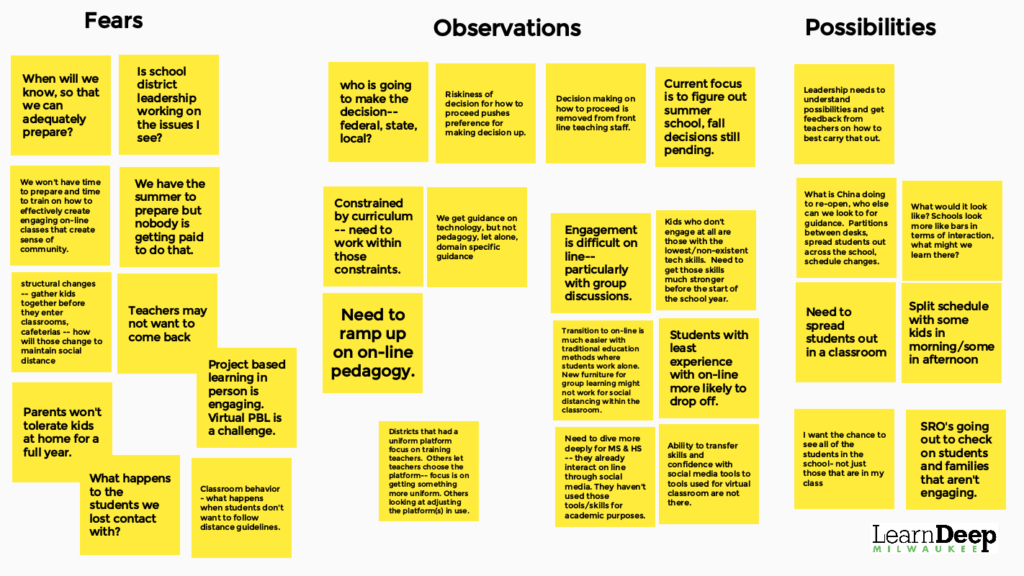This week we started our discussion with a conversation by asking about the fears participants have for what might happen in the fall. Much of that focused on the current uncertainty of whether schools will reopen in the fall, and if so, how. There is an expectation that the coming school year will still require distance learning, whether that is for part of the year or part of the day. Given the experience of the last couple of months, educators want to be prepared to teach effectively in whatever environment that turns out to be.
As we dug into these fears, we made note of a series of observations around what drives them. These focused on the decision making process, training and guidance available to educators as they experiment with distance learning, and factors which drive or limit student engagement when they are forced to work from home.
We also captured some initial thoughts on what changes might be necessary when students return to the classroom, as well as aspects of the in-school experience that educators would want to capture should distance learning return. The Jamboard we used to capture our thoughts is below.


